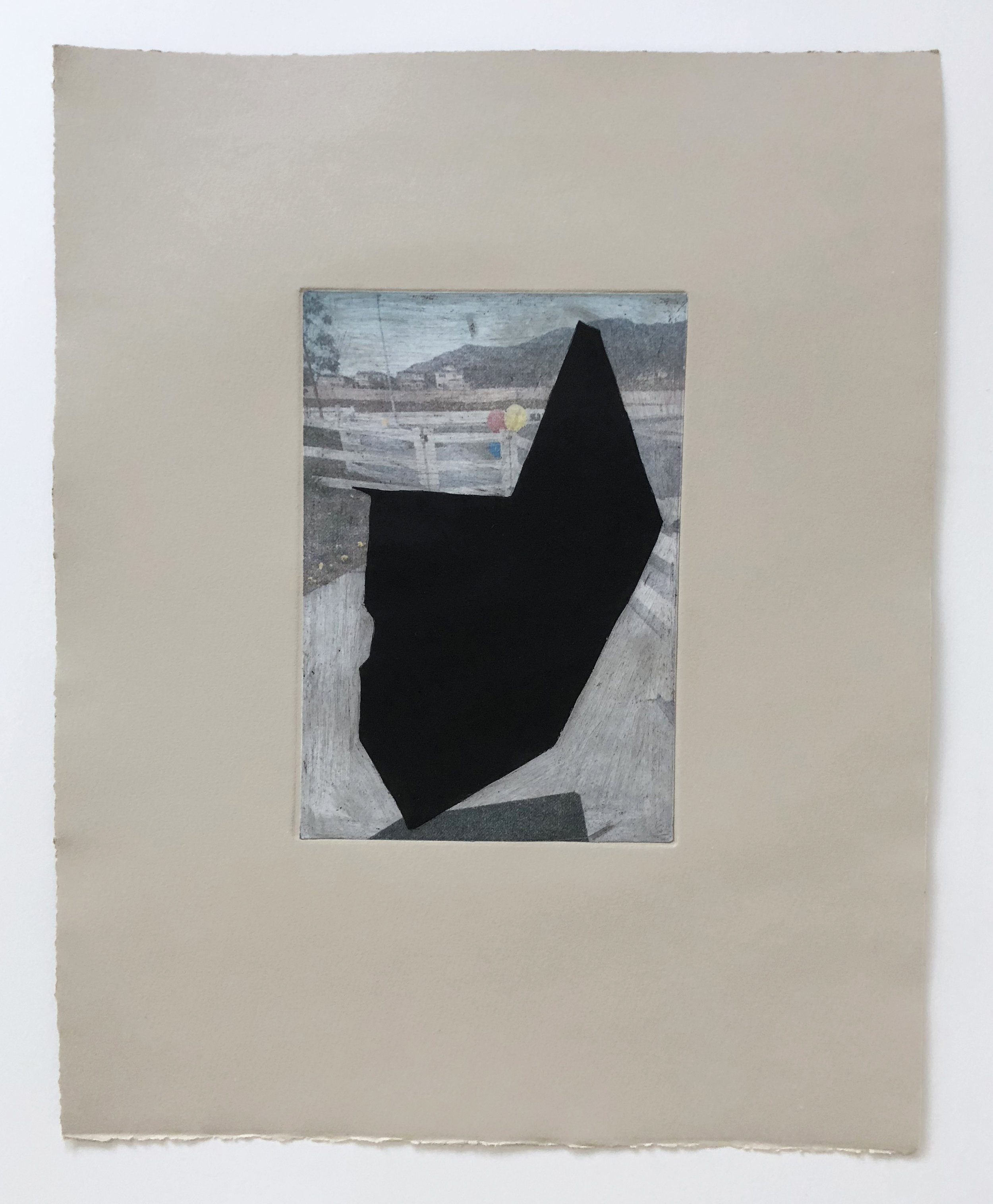
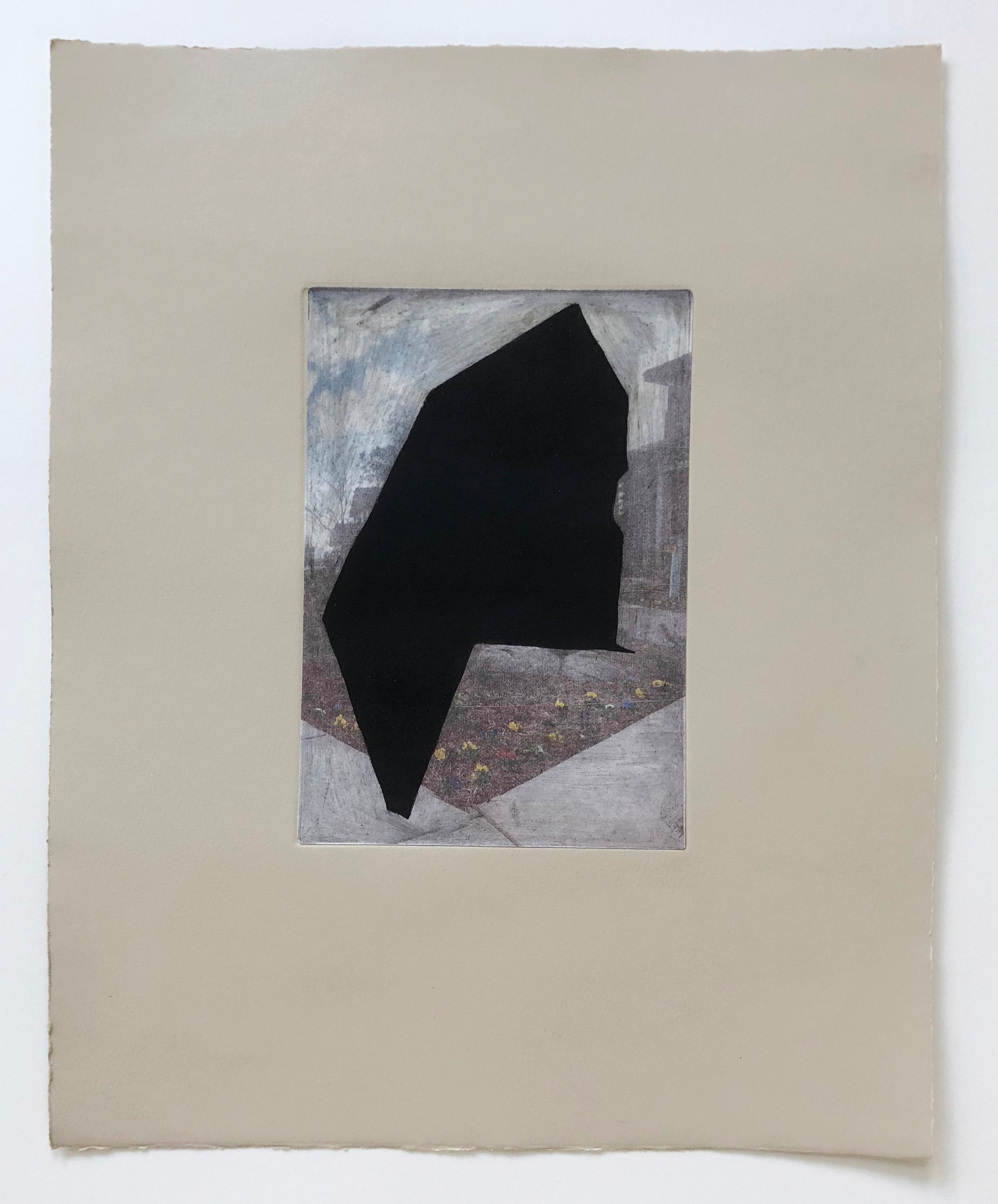
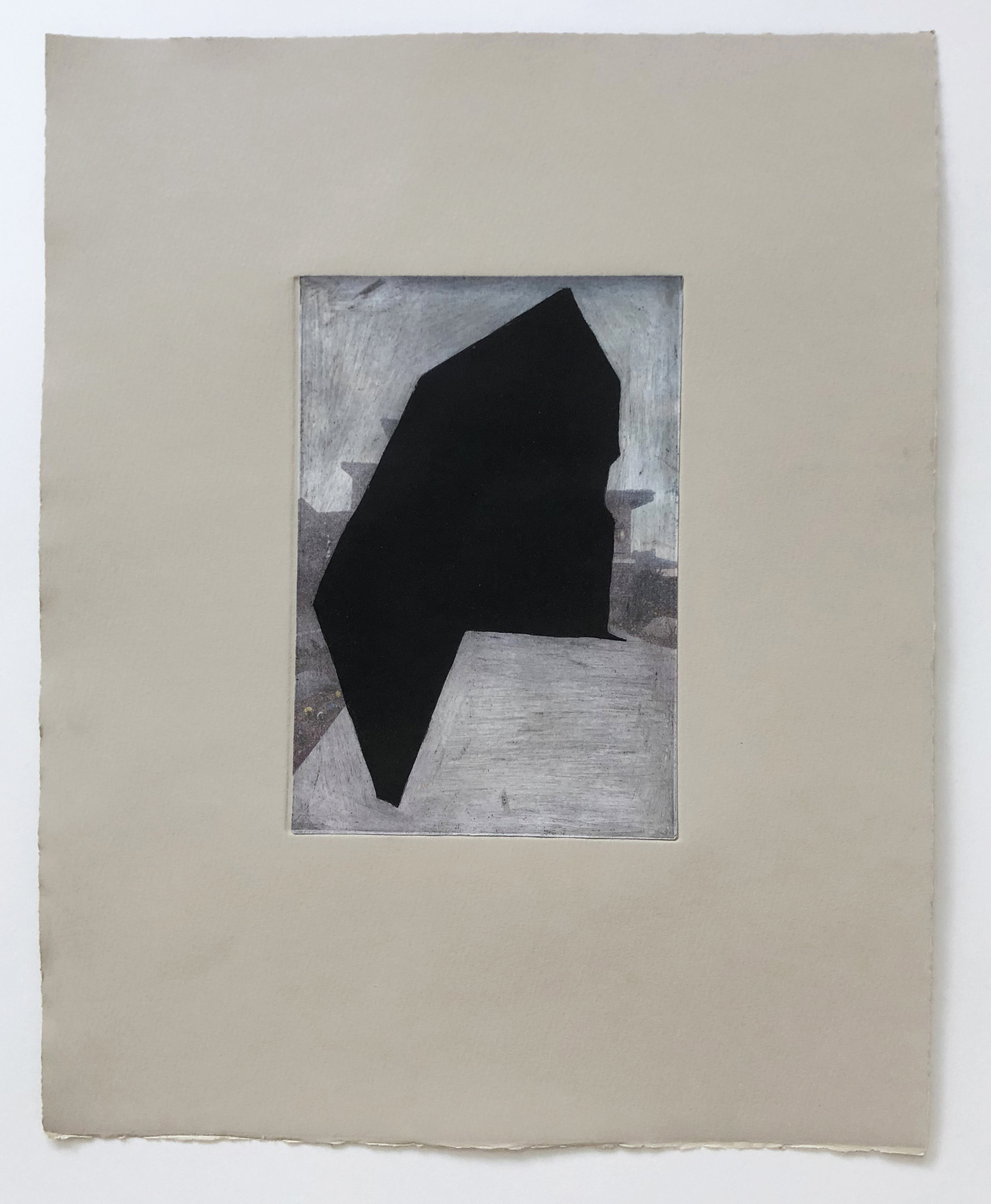
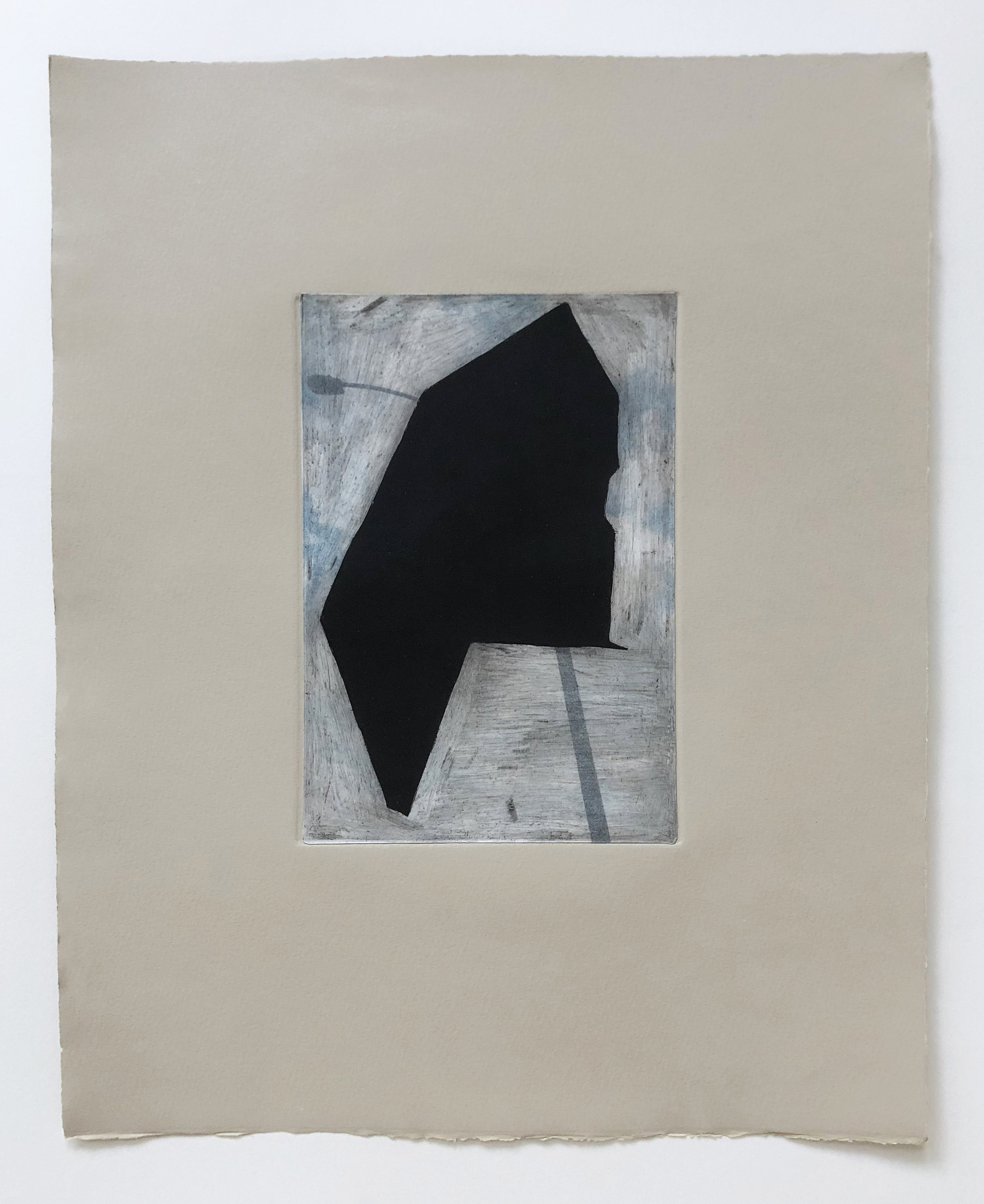
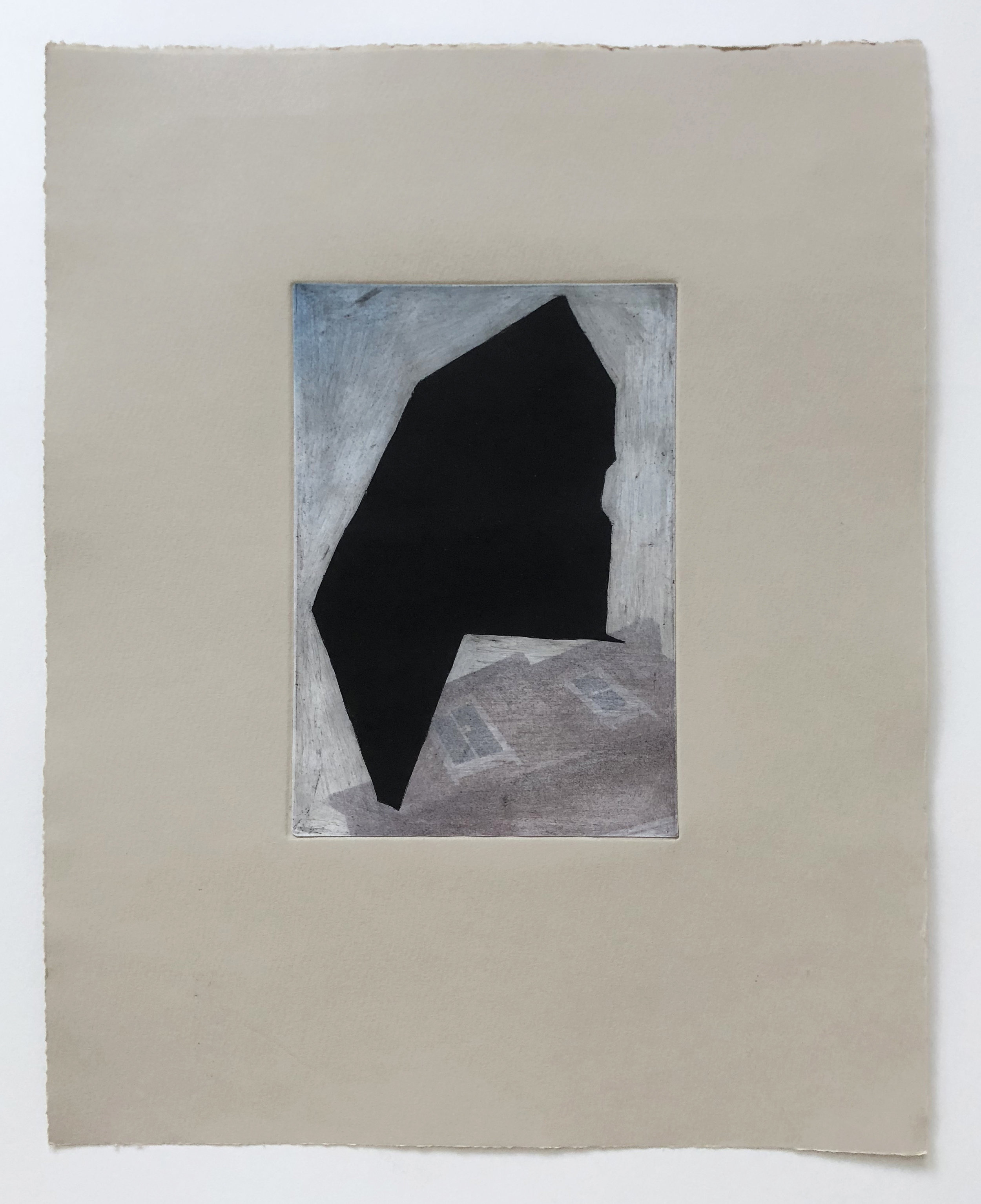
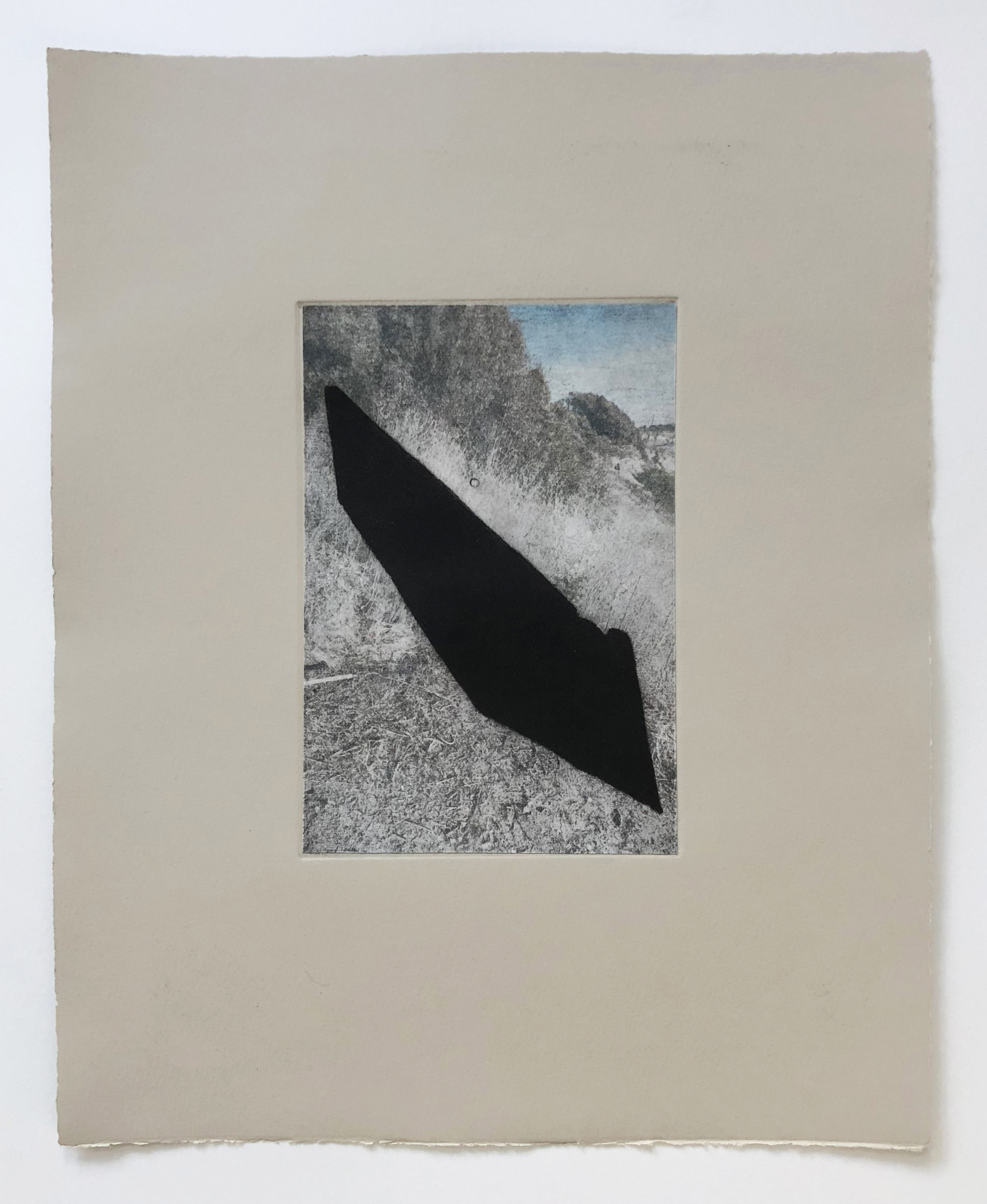
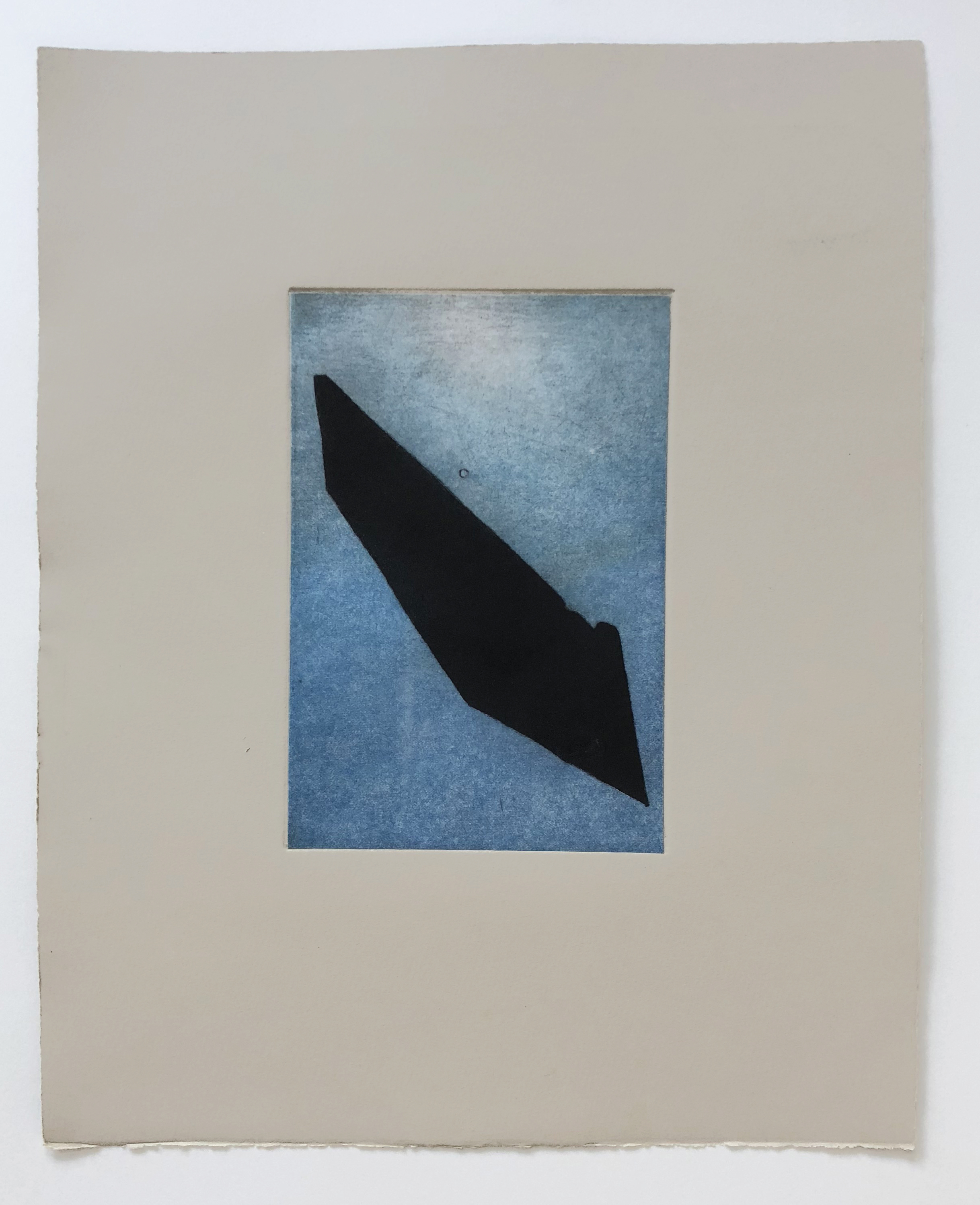
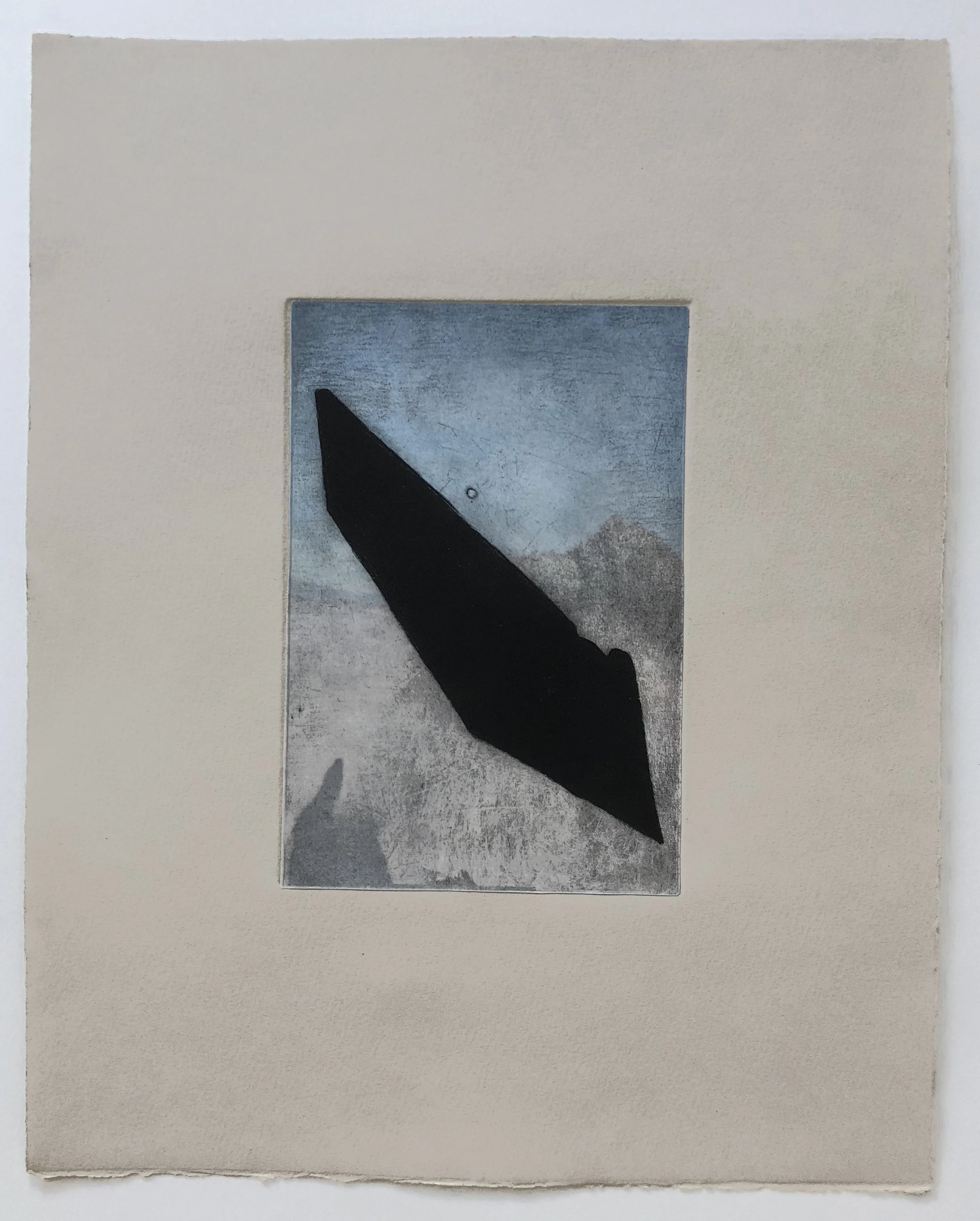
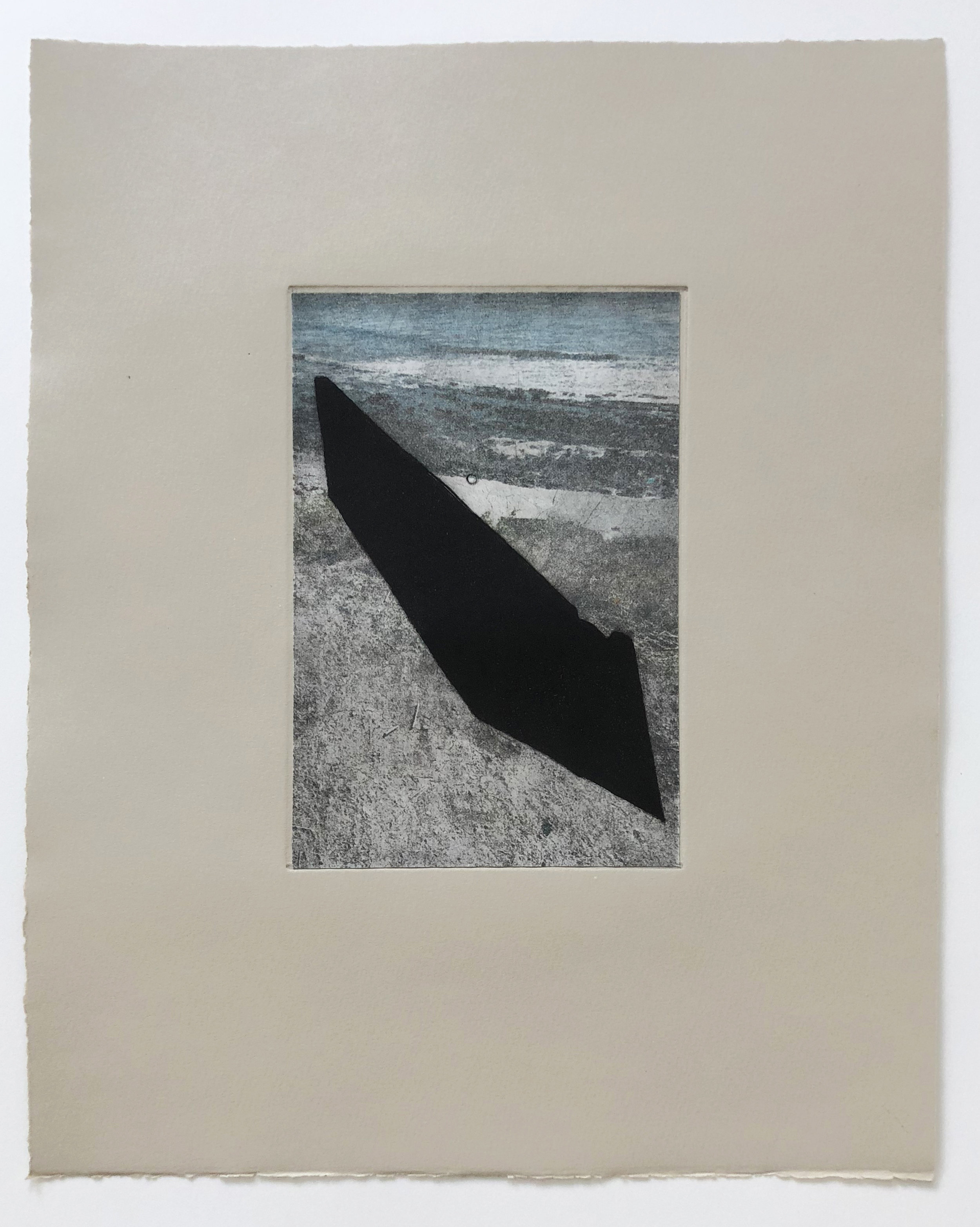
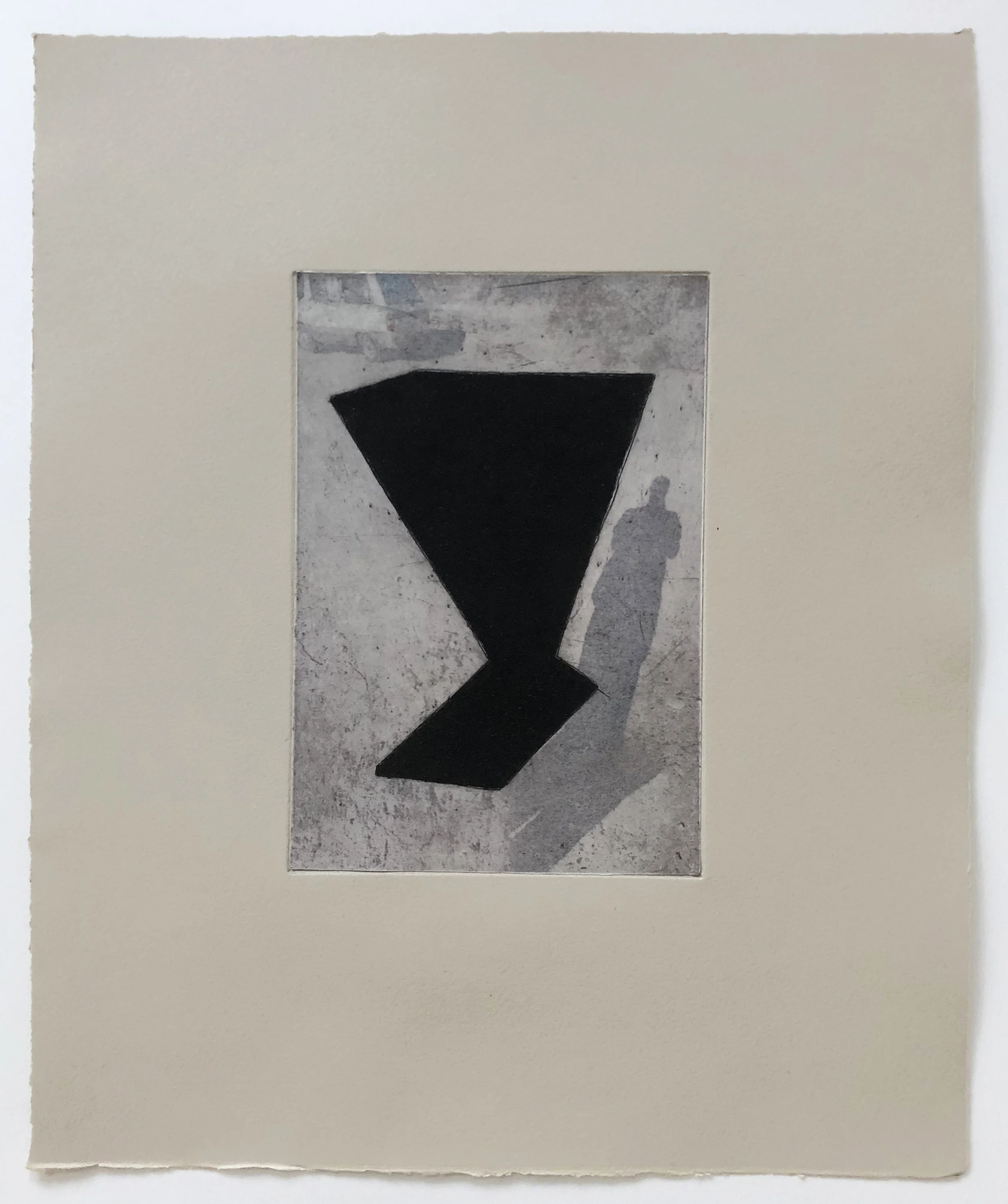
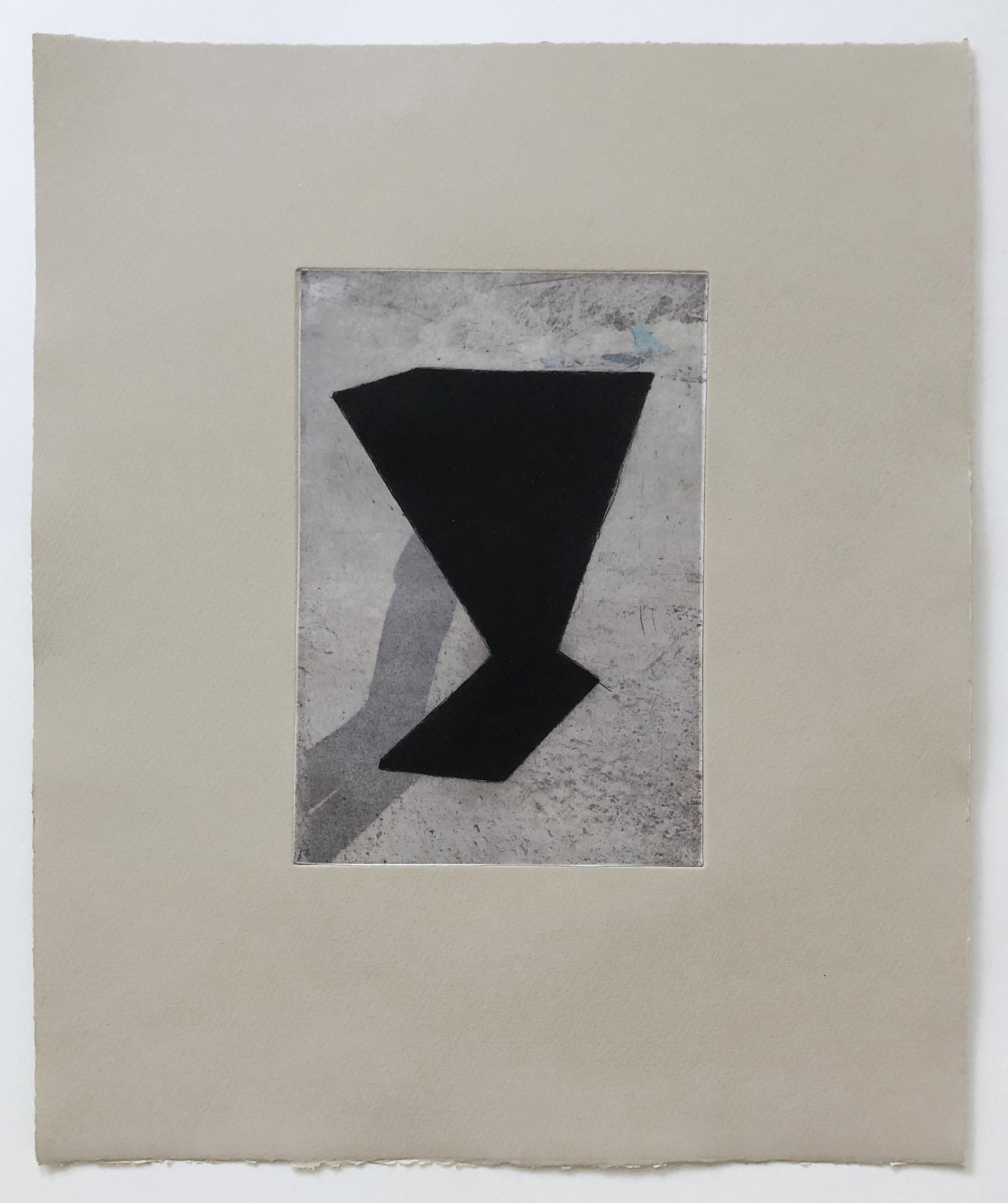
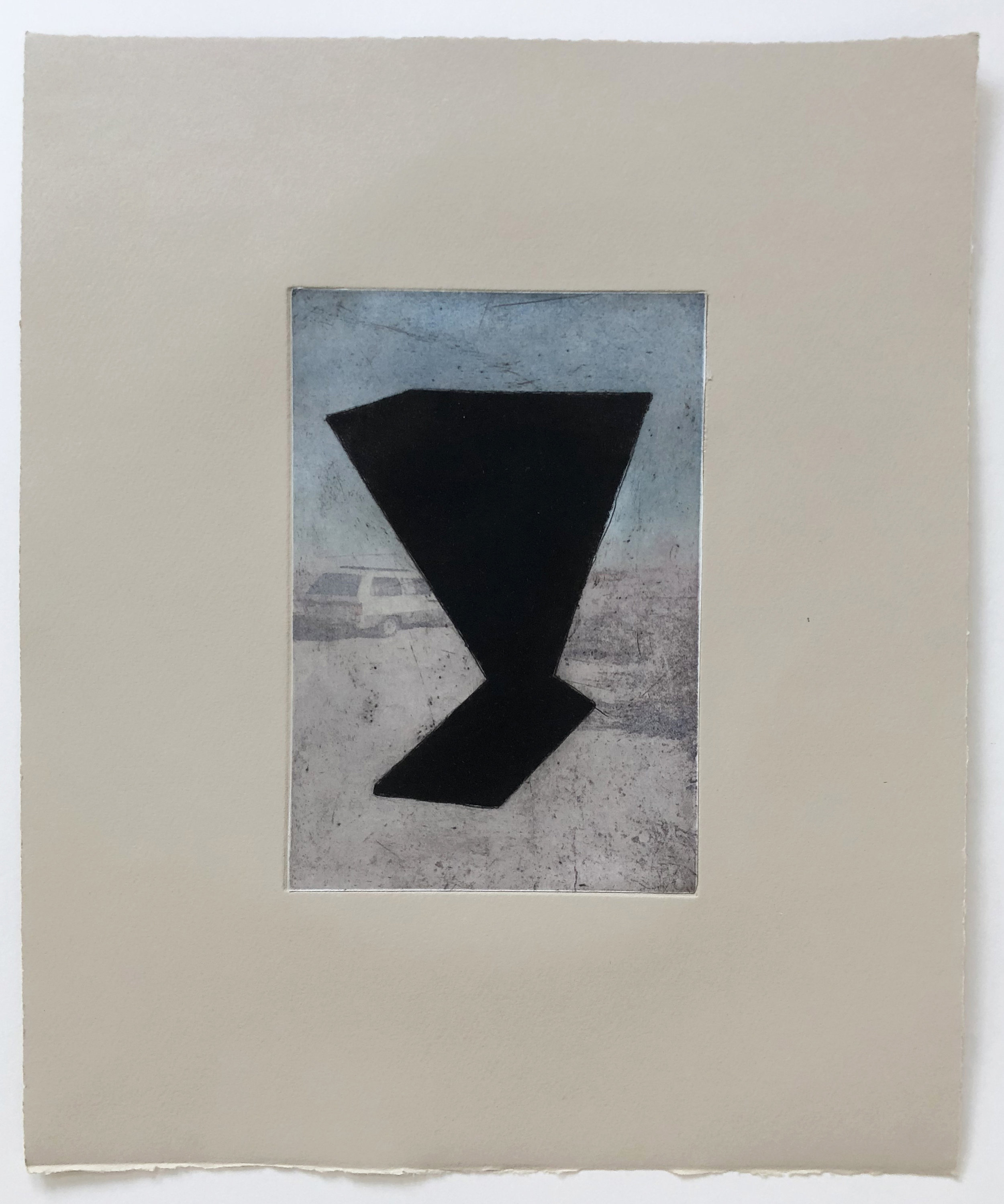
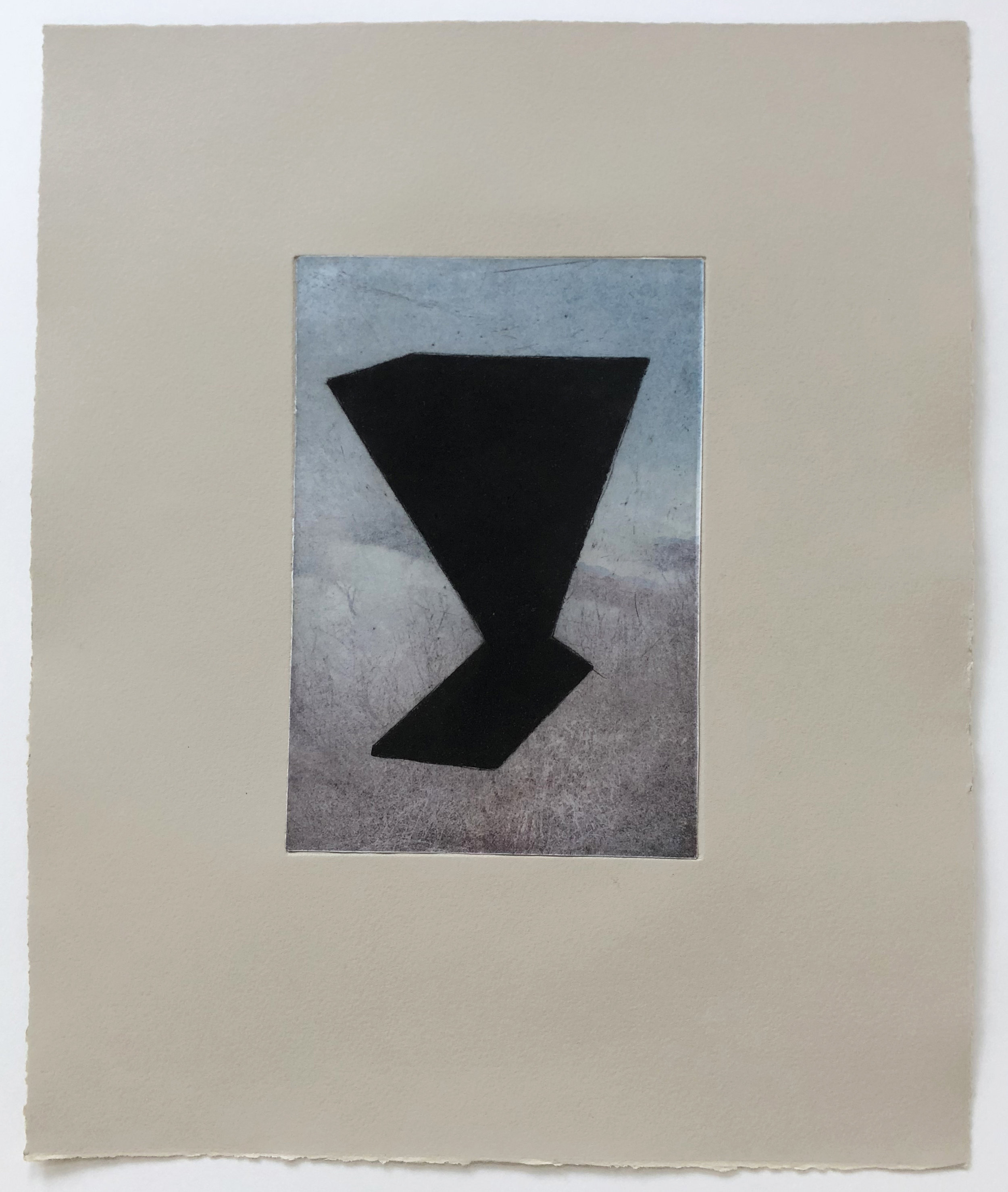
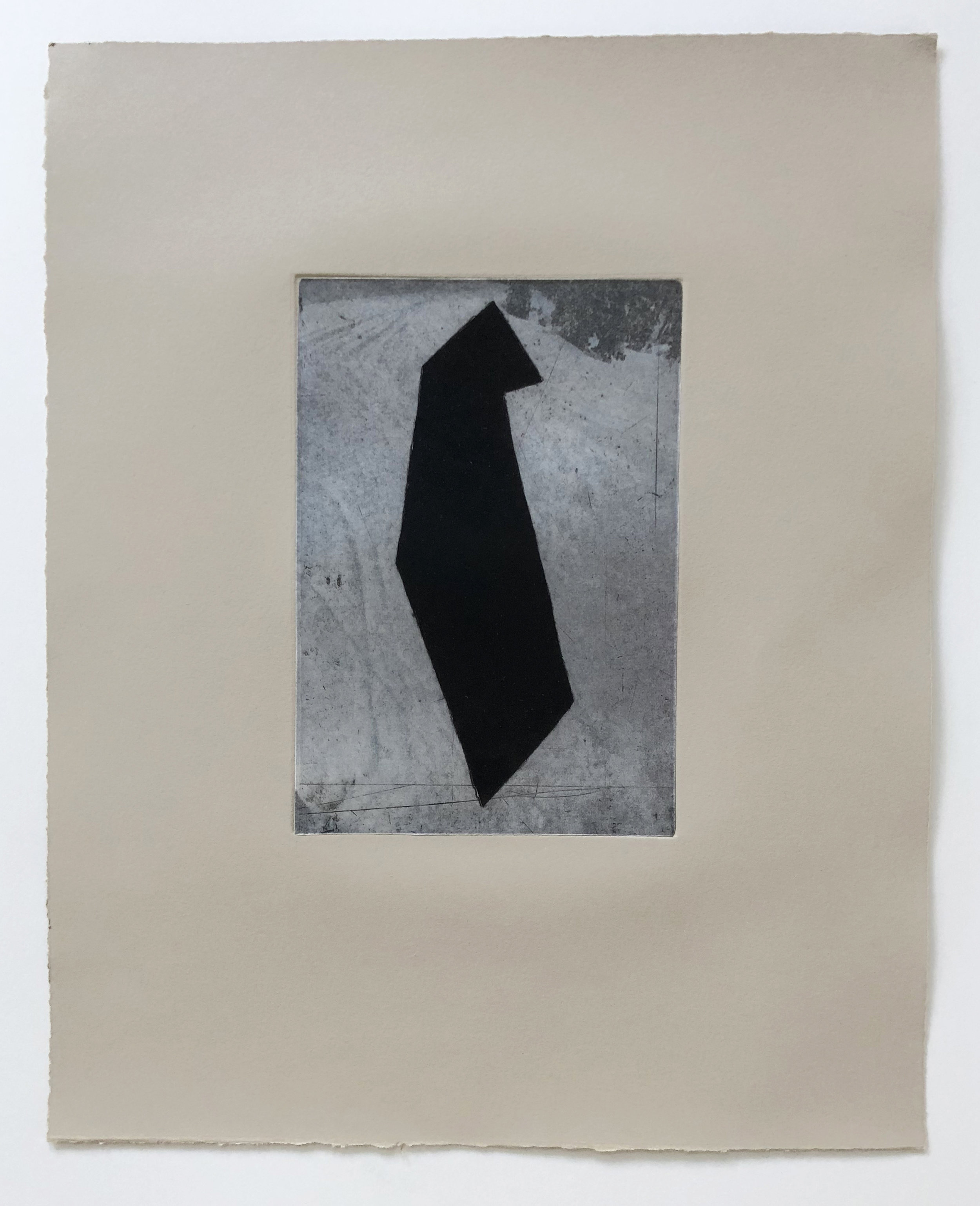
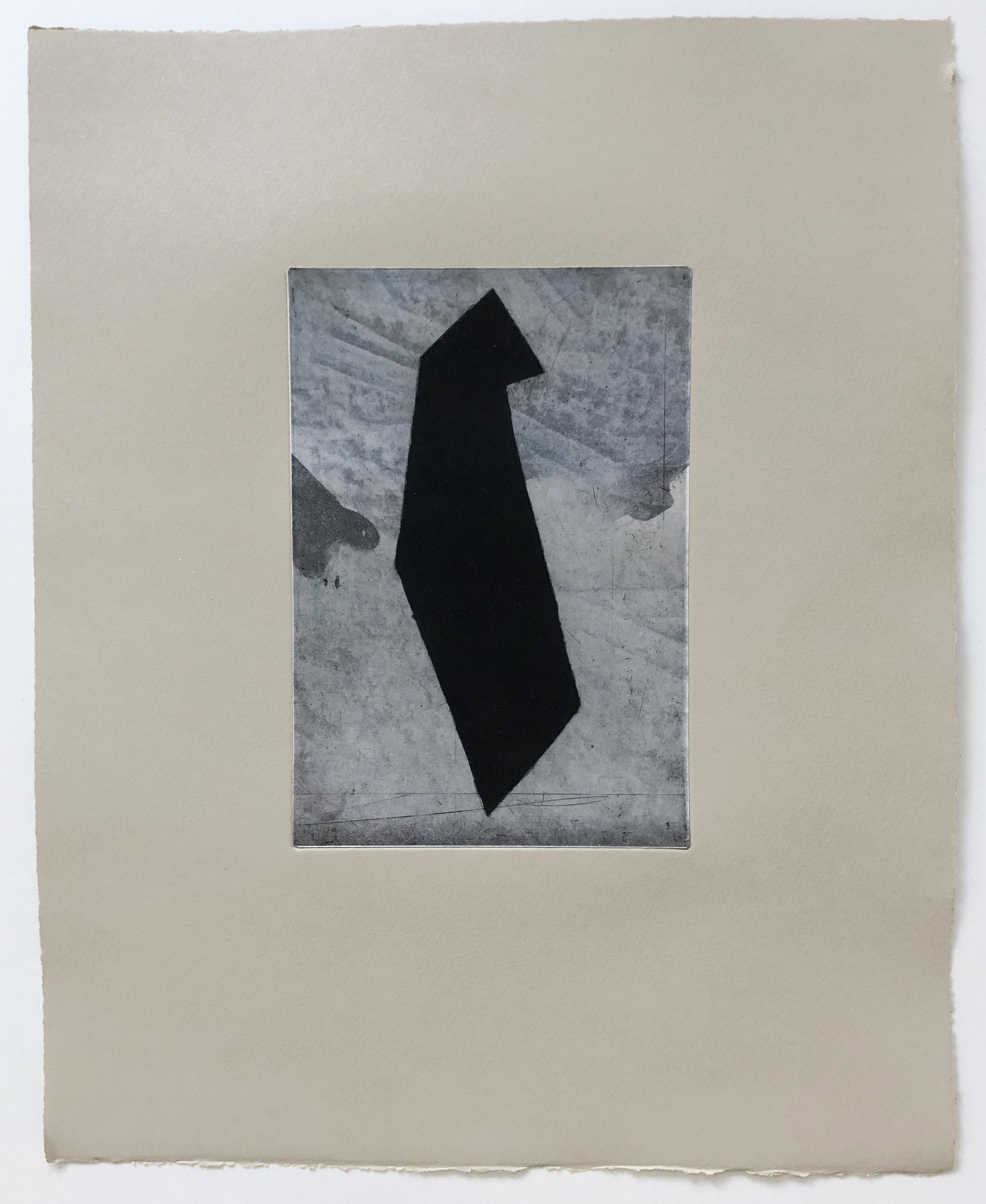
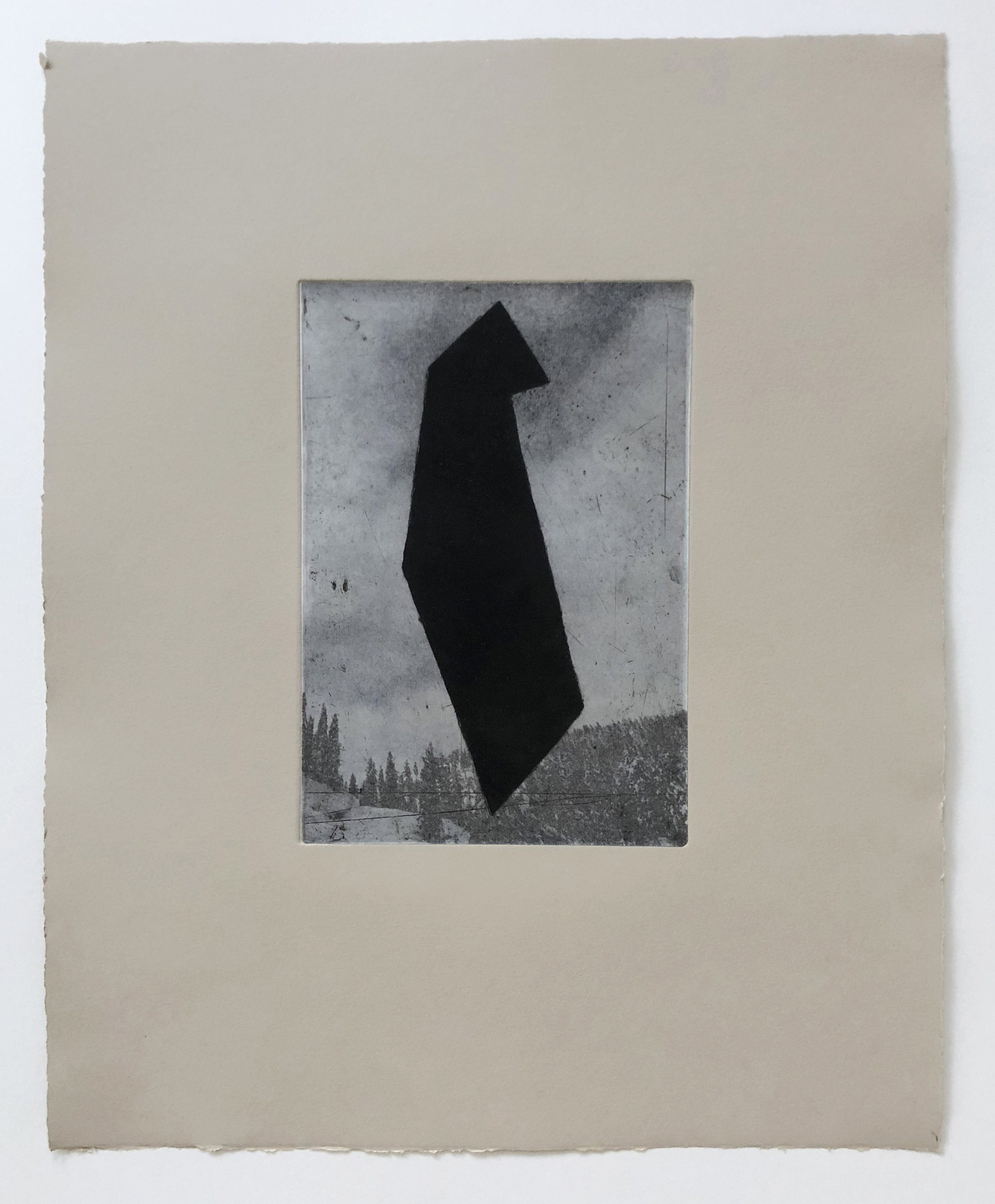
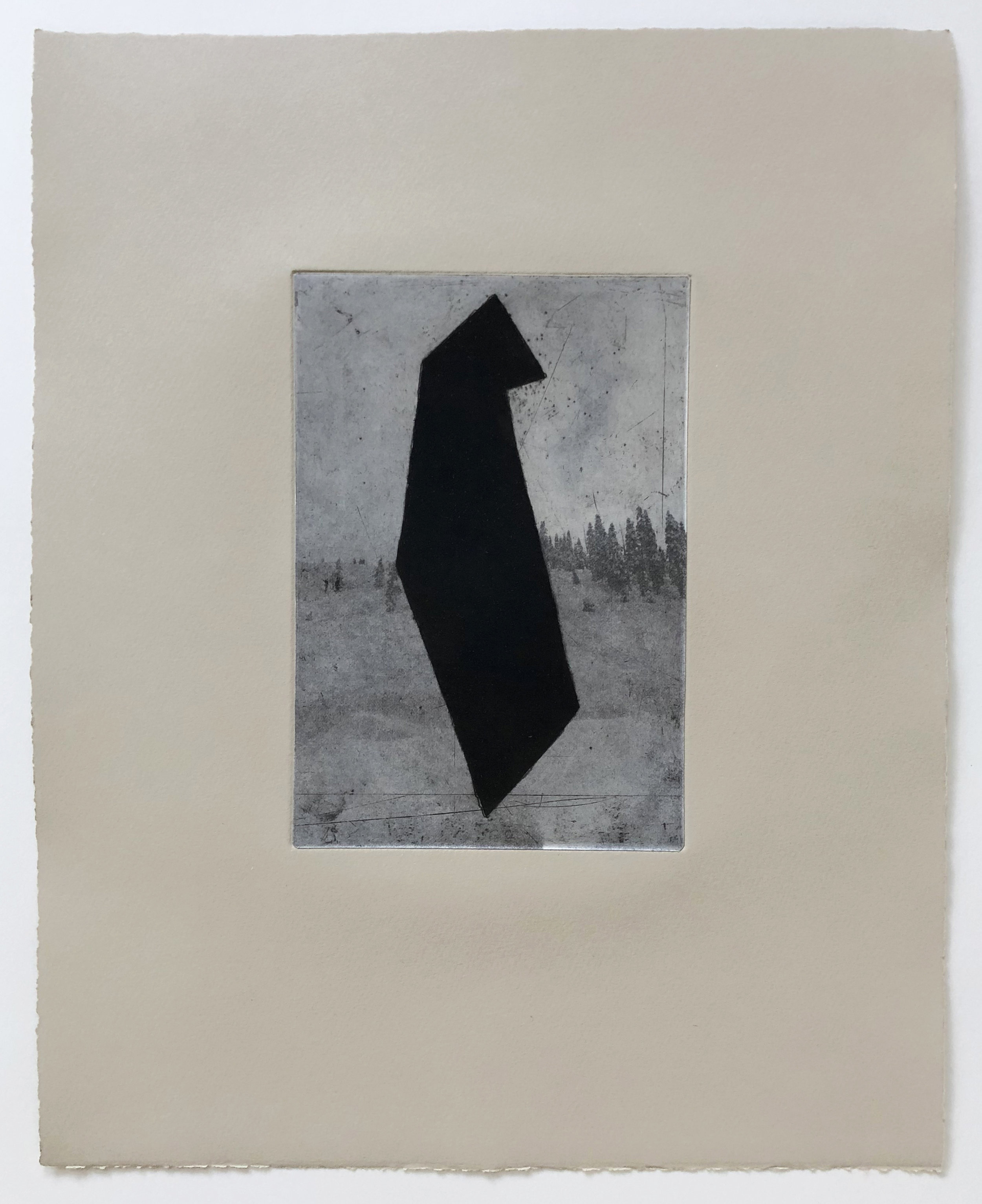
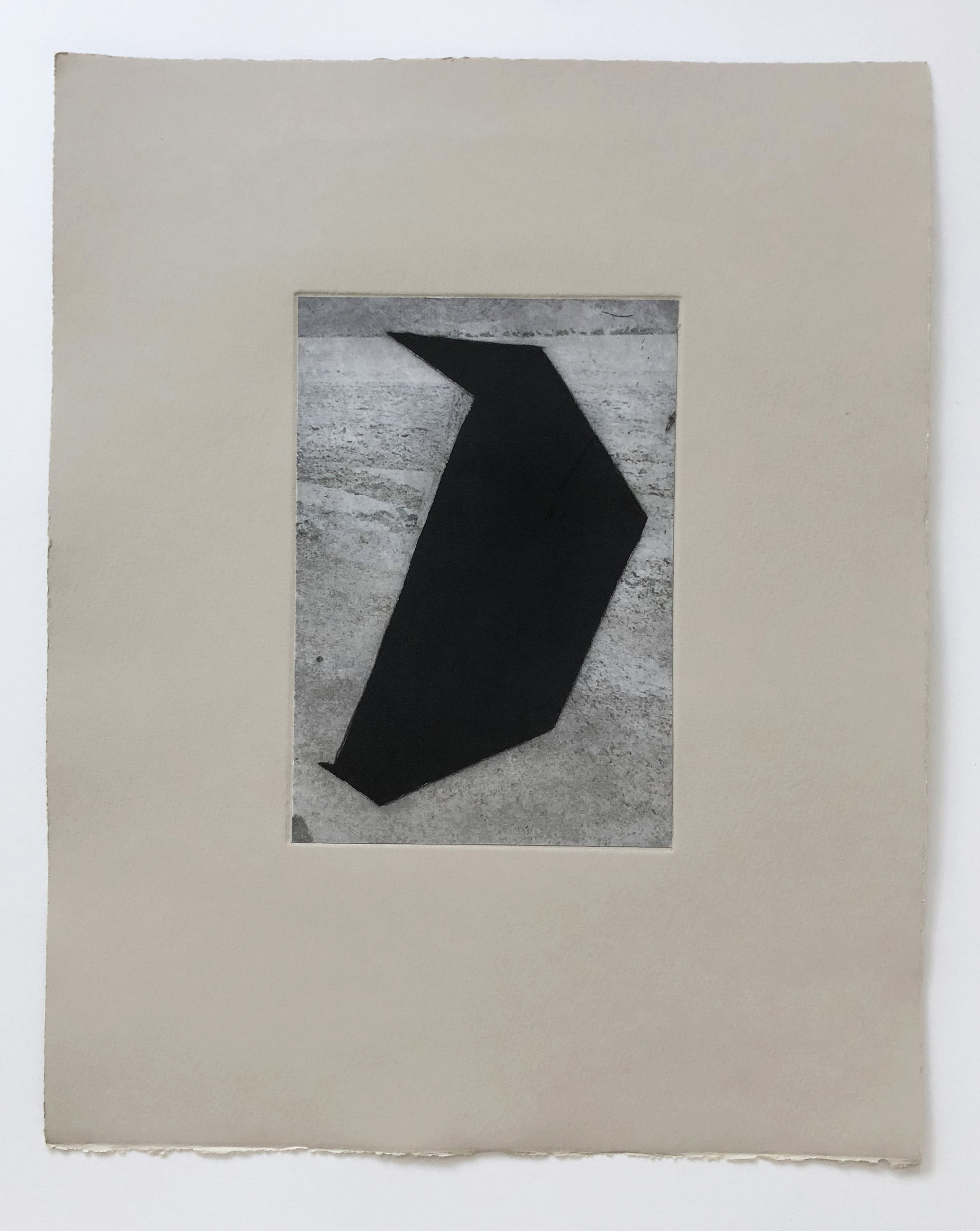
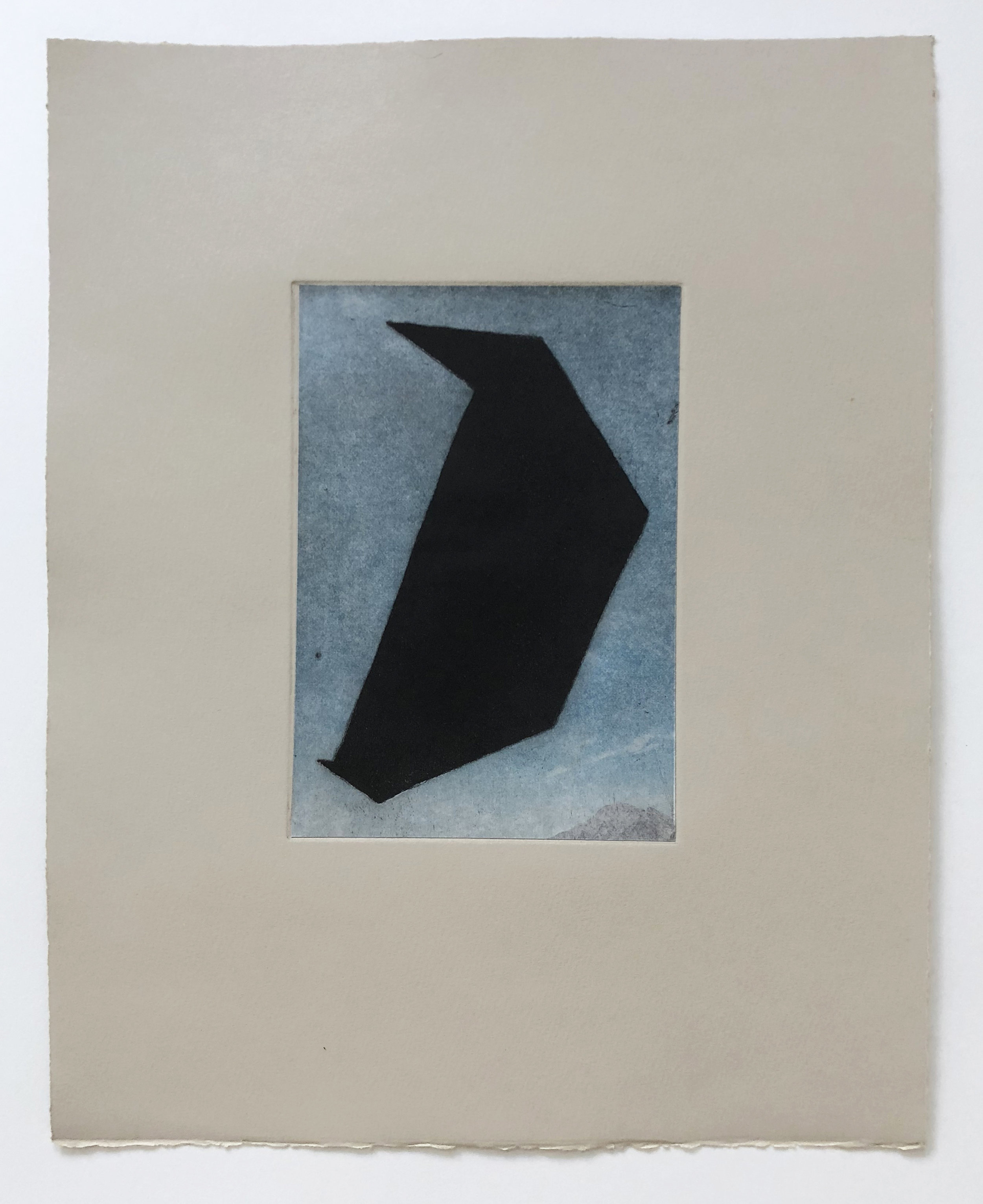
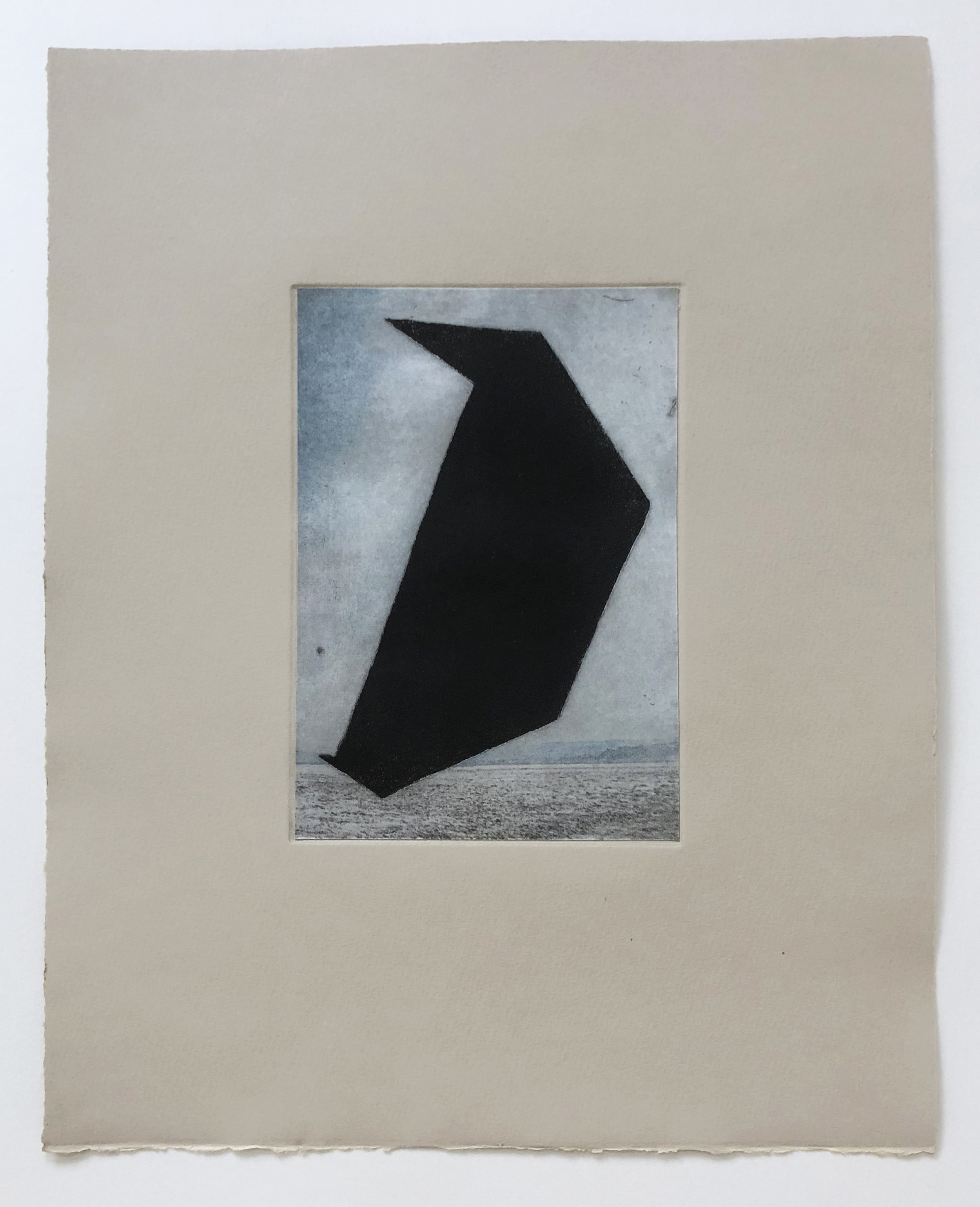
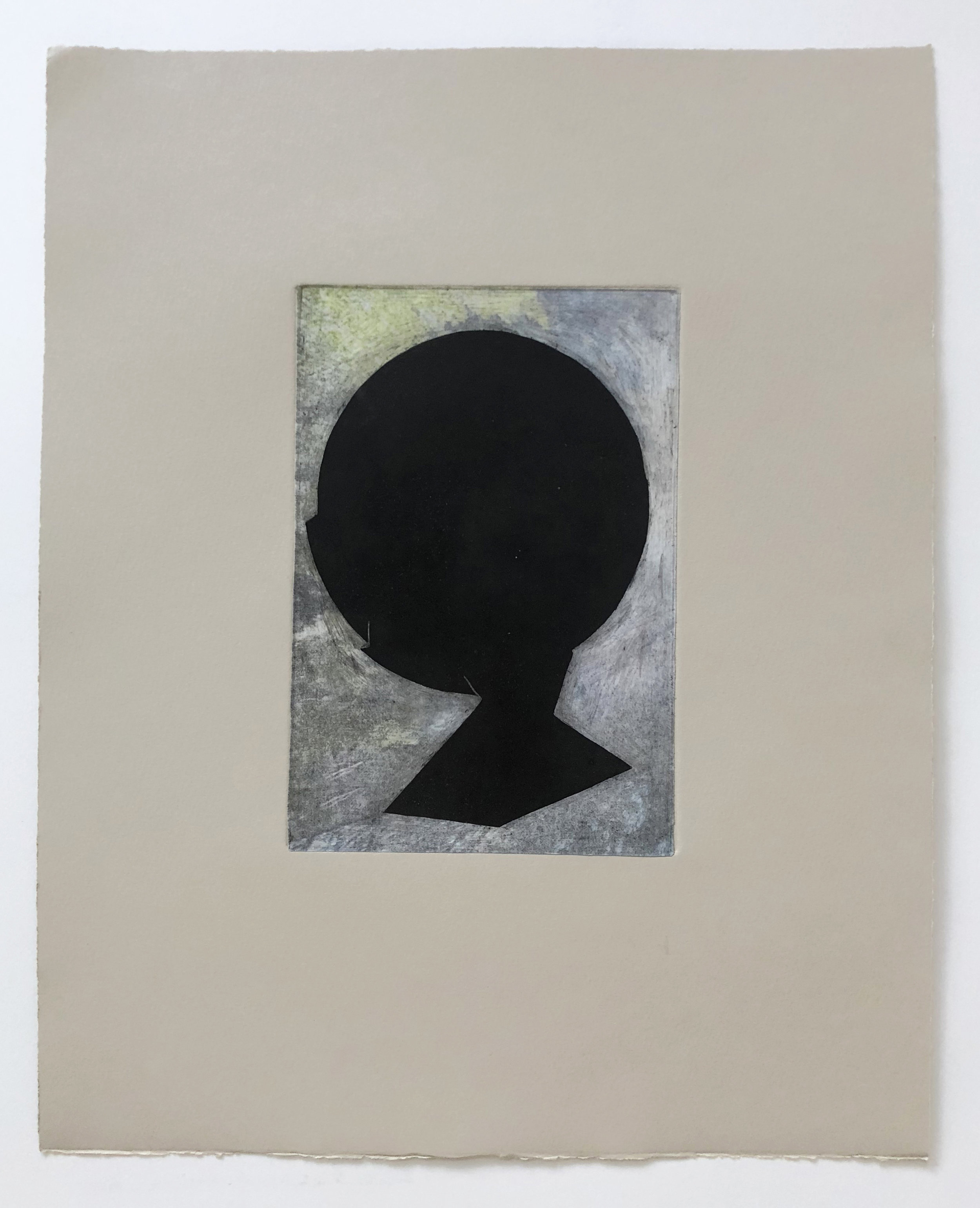
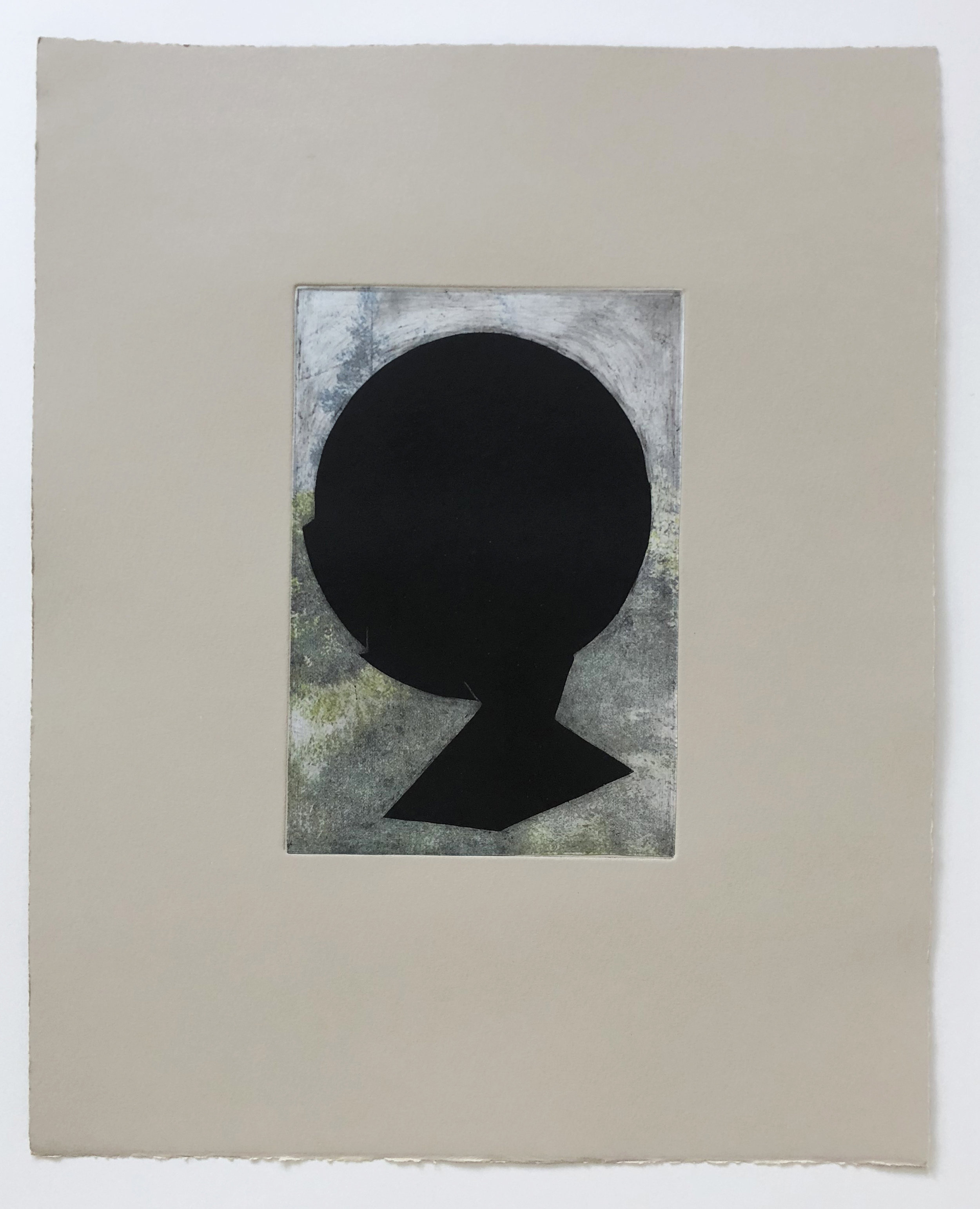
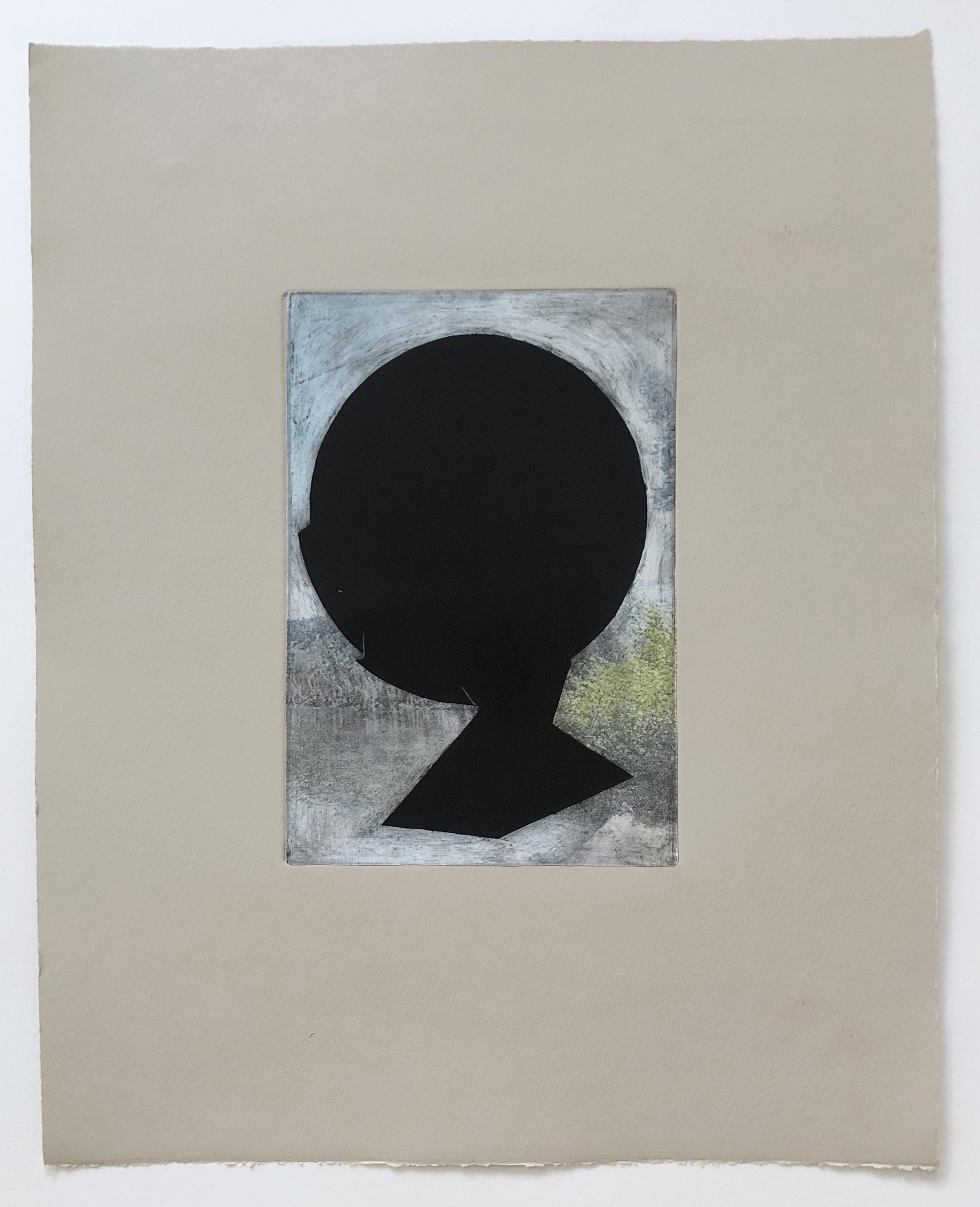
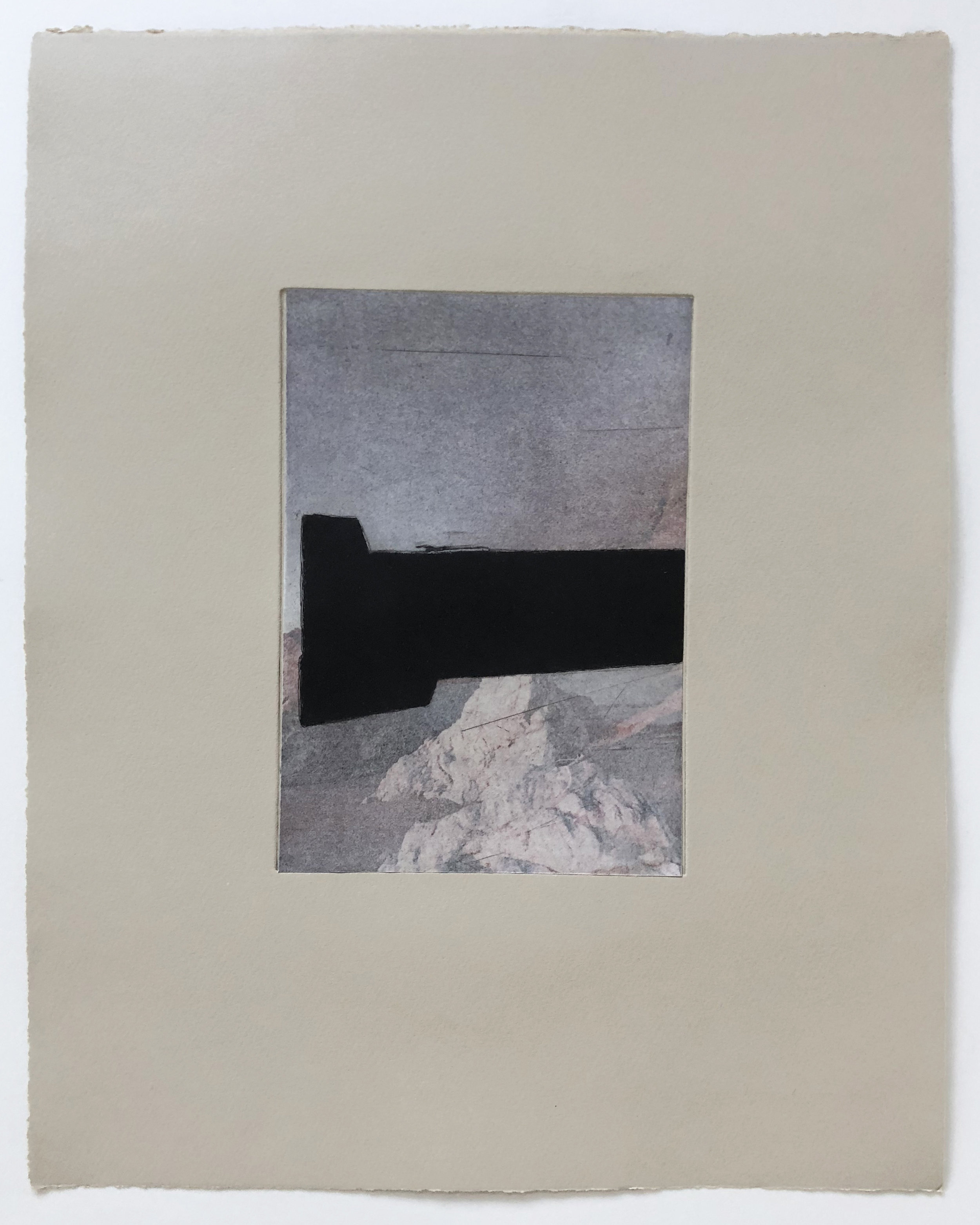
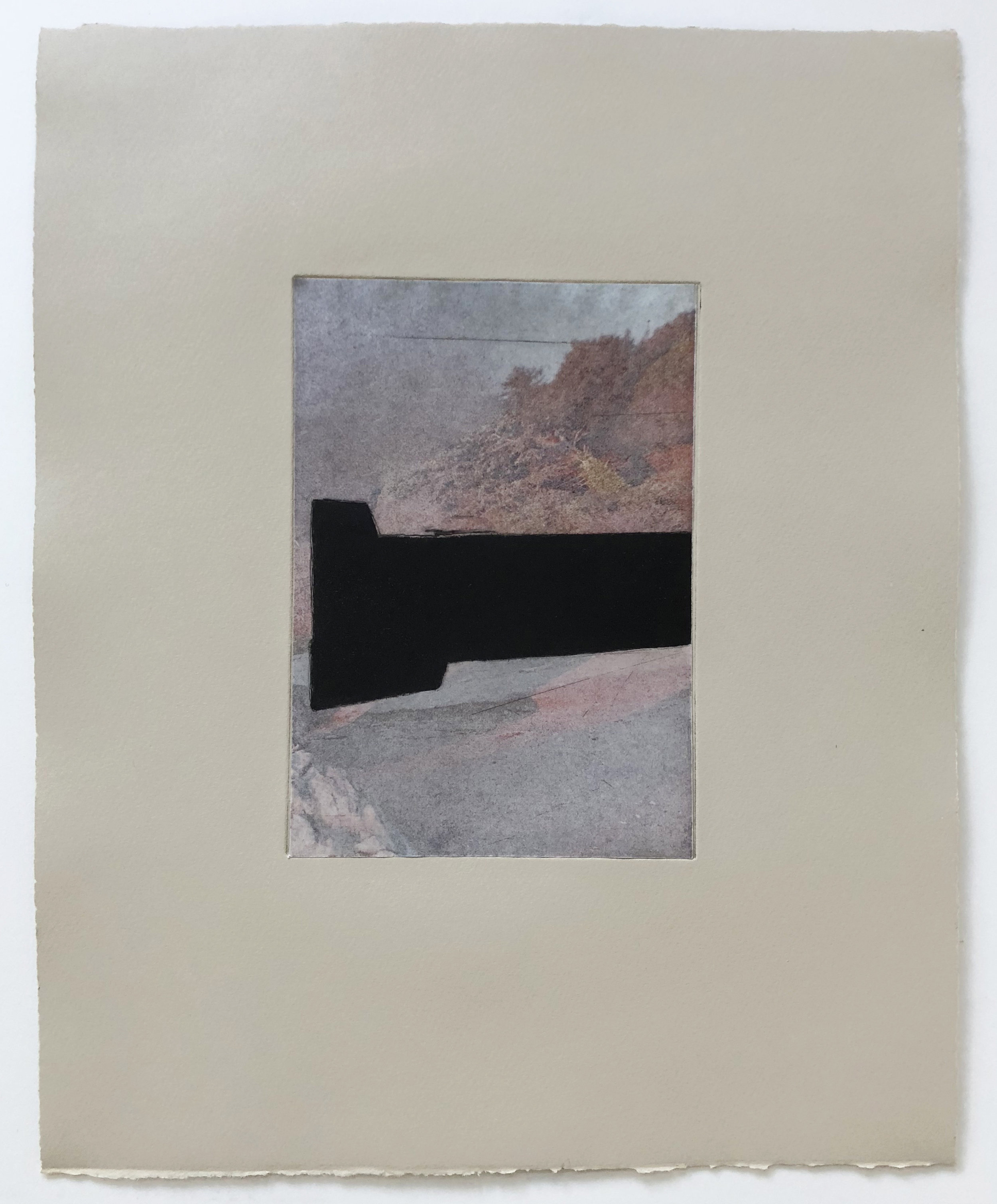
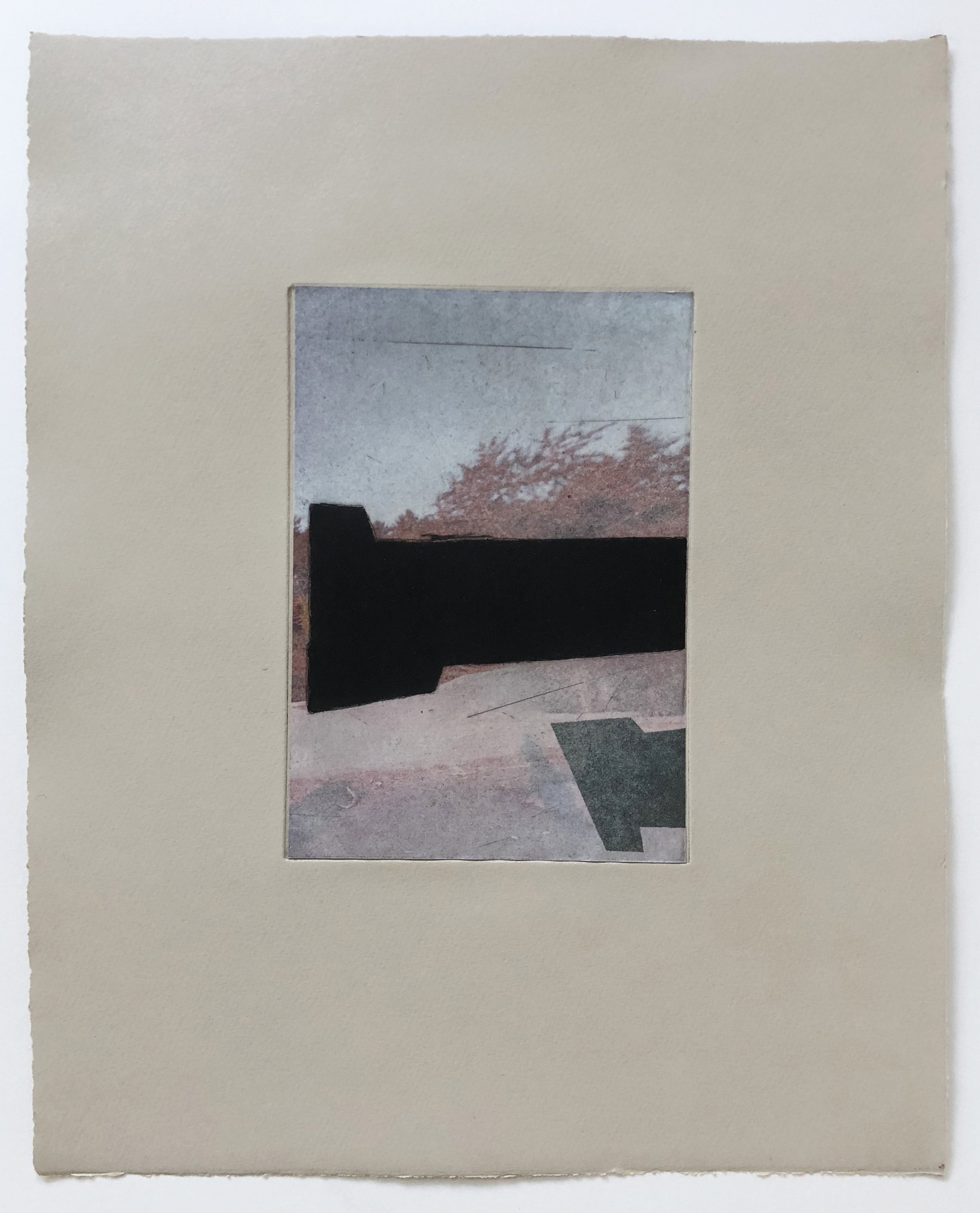
The suite of glitch etchings comprises more than 50 etchings that deal with surveillance, and notions of absence and presence.
When individuals upload images to googlemaps streetview, often the panoramic photographs they take are imperfect. An example of this imperfection is the glitch, or where the technology breaks down, where no information is captured. I am interested in this phenomenon of sharing photographs, of this impulse to document, which, in itself is related to the desire to remember. I am interested in the glitch, in the imperfection, in the incompleteness, in where the technology (and our memory) breaks down. These images are strange, surreal, and imply a violence that is latent in the landscape and in history. They are (imperfect, incomplete) documents — a record of someone, a stranger to me, having been somewhere at some time. The desire to share these images suggest changing notions of public and private and imply that the self-surveilling many of us participate in, in various ways and to varying degrees, might destroy privacy, and therefore our very humanness.
All of the images in the Glitch series capture the landscape of California, where I grew up. The black shapes are embedded in the uploaded images. That is, they indicate the shape of the absence of photographic information. The density of the black is made through multiple etches of hatch marks and drypoint. The xerox transfer images behind the glitches are all sourced from the original image where I found the glitch.
By mingling the technologies of internet mapping and etching, I am confusing the idea of record and of time, and of how to record time. I question the accuracy and efficacy of the mechanized way the camera supposedly records the world: do new modes of sight — aerial perspective, the body camera, google earth, unmanned or manned drones — impact fundamentally how we see? What are the implications of the fact that these technologies separate sight from its original location — in the body — in the eye and mind — and therefore allow someone to “see” something far away from them, in real time? Does seeing lead to understanding?